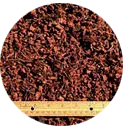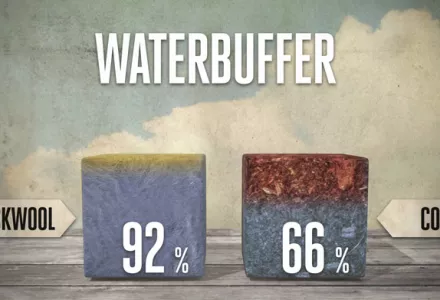“I’ve got a lovely bunch of coconuts, fiddeldy-dee.” Whenever I mention to my dad that he should really give coco coir a go in his greenhouse. This is what he usually ends up singing in return. I’m not sure if it’s an age thing but sometimes convincing the older guys to use. Anything but peat is bit like trying to convince flat earther’s the moon isn’t really a giant Hologram. He is already set in his ways. I guess, unlike the new generation. They have embraced Coir as an alternative for growing with Mucho Gusto.
At the very least, coir does look a little bit like peat. So that’s the first hurdle overcome for the older boys to begin considering it as an alternative. Other aspects of growing with coir aren’t quiet as similar though, but not so far removed that it should become a daunting challenge for them. Coir is a fantastic medium to use. All it takes to get the most out of coir is understanding the nuances that make it so great, and ultimately how you can use them to your advantage. That’s essentially the premise of this entire article. We are going to lay bare the principles of coir as a substrate and dig deep into its many forms and applications thereof. - Knowledge is power folks - The right sort of knowledge of course. Harking back to the flat Earth example, the right mind set combined with the wrong information can prove to be an entirely different scenario altogether.
Pure Coco
The easiest (and actually the most practical) way in which to make use of coir is completely pure and unadulterated. Like we eluded to earlier, coir has its own very unique physical properties both in terms of aeration/water retention and also nutrient holding abilities or Cation Exchange Capacity (CEC). While combining other materials into the mix can sometimes have positive benefits to plant growth, it can also sometimes overly complicate the inner workings of the substrate to the point where it will actually stifle any advancement. To begin to understand exactly why this is, we first need to look at the individual parts of the equation, rather than just focus on the sum.
3 Forms of Pure Coir
Currently available in any self-respecting grow shop will be a plethora of different brands of coir. What you need to be able to deduce as a discerning shopper is what the differences are between them and which of them are likely to work best for your particular grow room and irrigation system. There are three main horticultural grades of coir used by the various brands on the market, and each brand will have a slightly different percentage of each in their own particular recipe. They will generally be a combination of:
1. Pith/Dust

The super fine particles of dust, called pith, remaining from the washing and buffering process. Excellent water holding capabilities and an ideal base for starting seeds. However too much dust will result in compacted and poorly aerated medium.
2. Coarse

Slightly larger and more strand like, fibrous coir that provides an excellent source of air pockets and offers great drainage capabilities. The natural capillary action of the fibrous strands help provide a more even saturation throughout the pot.
3. Coarse chips

Larger coarse chips and fibrous strands. Provide an abundance of air pockets, and a fantastic level of drainage. Using exclusively this grade as a medium offers the high-end efficiency and usability of a more inert substrate like rockwool, yet it is still classed as an organic substrate.
Bags, Slabs or Blocks?
So once a healthy balance of the three grades of coir has been determined, they are combined and bagged up for sale.
1. Bags

Most commonly you will find it loose filled in 50 Liter bags, that should be measured out according to strict EN regulations. Loose fill bags are most certainly the easiest to use but when you have a dozen or more bags to move, transportation problems can rear their ugly head.
2. Slabs
Coir in slabs offers the possibility to install a coir based system in exactly the same way as you would with a rock wool slab system. Making use of the chip grade of coir within slabs offers a surprisingly efficient, and natural alternative to rock wool. However, if the more complex irrigation strategies that come with this type of substrate put you off, then the more fibrous grade of slabs offer a happy medium between the two.
3. Blocks
Blocks of compressed coir make for a fantastically transportable medium. No huge and heavy bags to carry around, just a nice and light compressed block. In general, the problems that come with compressed blocks is that they are typically made of poorly washed/buffered coir and that you have to spend quite some time ensuring it all expands nice and evenly.

However, in more recent times you can find compressed coir that is of exactly the same quality you will find in a premium loose fill bag and you can find brands that have innovative methods for expansion that take all the effort out of it for you. Just be sure to choose a reputable source.
















